There have been decades of public health education around skin cancer, yet Australia remains the skin cancer capital of the world. Australia has some of the highest levels of UV radiation in the world – in fact, UV radiation is strong enough to cause sunburn in as little as 11 minutes on a fine summer day.
Skin cancer rates remain high and sunburn a common annual occurrence each year for many. With two in three Australians diagnosed with skin cancer by the age of 70 and over 2,000 deaths due to skin cancer in Australia each year, it is vital to get the message through about sun protection in Australia.
The majority of the visible signs of ageing are the result of damage to the skin caused by UV exposure. It is believed that as much as 80% of premature facial ageing - such as wrinkles and fine lines - is due to sun exposure.
The positive association between self-reported lifetime sun exposure and skin damage (hyperpigmentation) and ageing (wrinkling) is particularly strong for those aged under 50 years.
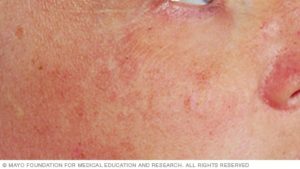
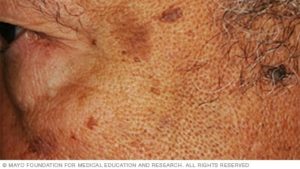
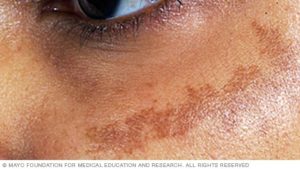
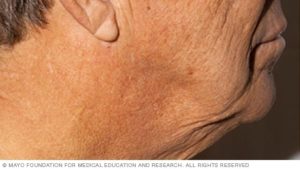
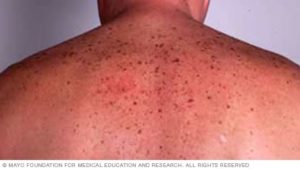
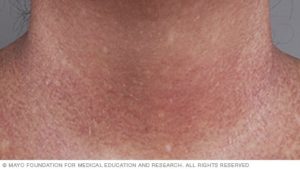
In my weekly work at a dedicated skin cancer clinic, these are conversations I have with patients all day, and I continue to be surprised at the common myths and misconceptions that abound in the general community.
We are about to head into another summer, and after nearly 4 months of lockdown cooped up inside, people are eager to be out and about, so let’s get to mythbusting and hopefully save our skin.
Myth 1: You cannot burn if you wear SPF
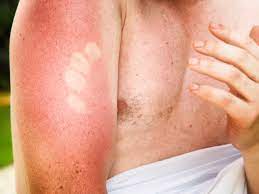
SPF forms just one part of the required means to minimise the risk of sunburn. That is why there is a national campaign that refers to the 5 S - slip, slop, slap, seek and slide. If you cannot remember each of these steps:
Slip on long sleeved protective clothing
Slop on some high and broad UV protective sunscreen and reapply regularly
Slap on a broad brimmed hat
Seek shade wherever possible
Slide on some sunglasses
Myth 2 : you cannot burn in the shade

I regularly see patients during skin cancer checks who wear a broad brimmed hat when out in the garden, or who work outdoors and wear protective clothing including sunglasses and hats, but who still have significant chronic sun damage to the areas inadvertently exposed - the back of the neck, the area of the chest exposed by shirts and sometimes even the lower face, where the hat does not shade the lower face.
Even under shade sails, and by bodies of water for example, surfaces can reflect light and intensify the UV rays. Similarly, unless completely impermeable to the UV, most shade sails and similar still allow some UV rays to penetrate the material and shade under trees and foliage is only as reliable as the thickness of the canopy you seek shade under.
Myth 3: You cannot burn in the water
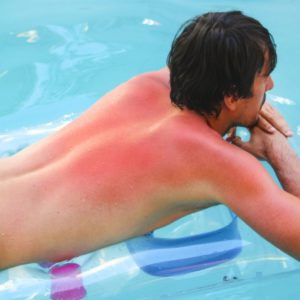
Research has shown that upto 40% of UV rays can penetrate water for as much as 50 cm.
Additionally when immersed in water, you may not notice you’re burning as the water has a cooling effect. Reflective surfaces around water can also amplify UV, therefore it is important to reapply sunscreen often (every 30-40 minutes) and to seek shade and practice as many of the 5Ss when not in the water.
Myth 4: You cannot burn in the car with tinted windows
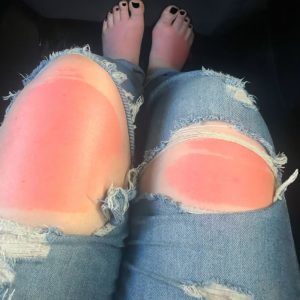
This is one of THE commonest myths I hear every single week. While some windows in cars might be tinted, thereby reducing UV transmission to some extent, the truth is windscreens and the driver’s windows are not tinted so anyone who is in the car for any length of time is a sitting duck for a sunburn and associated sequelae of sunburn, photoageing and skin cancer risk.
Myth 5: My skin is just red, it’s not sunburn.
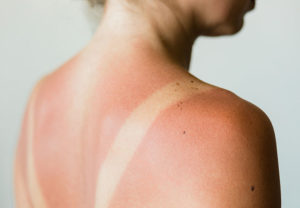
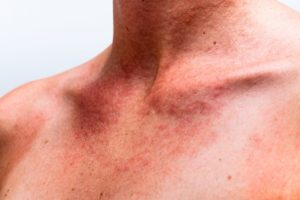
Chronic sun exposure degrades collagen and elastin in your skin, and this can result in uneven pigmentation. In some people, the sun may also cause permanent stretching of blood vessels, giving skin a mottled, reddish appearance that does not go away.
Tan lines are another sign of sun damage.
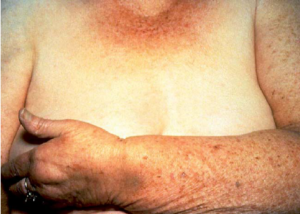 How do you know this is sunburn, and not just your skin? I often get patients in clinic to compare the skin on exposed areas to covered areas, so they can see how much damage the sun is causing on a regular basis.
How do you know this is sunburn, and not just your skin? I often get patients in clinic to compare the skin on exposed areas to covered areas, so they can see how much damage the sun is causing on a regular basis.
For anyone who is outdoors much- exercise, walking the dog, in the garden, working outdoors, spending any amount of time in the car- my advice is always, always, always:
| Monday: | By agreement only |
| Tuesday: | CLOSED |
| Wednesday: | 10:00 - 17:00 |
| Thursday: | 10:00 – 18:00 |
| Friday: | 09:00 – 17:00 |
| Saturday: | 09:00 – 15:00 |
Skin Essentials will reopen the week beginning 11th October 2021.
Per NSW government regulations, only double vaccinated patients will be served when we reopen and we will be checking vaccination certificates for all patients upon booking. This requirement may change as of December 1st, and we will advise you accordingly.
Please email us (contact@skinessentials.com.au) or text us (0413174654) your vaccination certificate as soon after booking as you can. We will not be able to see anyone for treatments or confirm appointments without this.
In the interest of full disclosure, transparency and patient safety, all patient facing staff will be fully vaccinated by the time of reopening. Please read our reopening FAQ for more information.